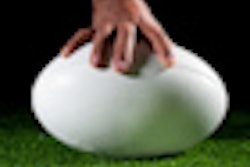Dear MRI Insider,
Meniscal tears -- or torn cartilage in the knee -- are a common injury, particularly among athletes who engage in contact sports. Degenerative meniscal tears can also occur in older people.
Italian researchers have taken a fresh look at how best to use MRI in these patients, and their findings are worth a close review. Go to our MRI Digital Community, or click here.
Further evidence that MRI is fast becoming the modality of choice in sports imaging was provided by two prize-winning e-poster presentations at RSNA 2012. New information was presented about injuries from rugby, skiing, rock climbing, boxing, baseball, and cricket. Get the story here.
During the same congress in Chicago, German researchers reported on high altitude cerebral edema (HACE), a severe and often fatal condition that can affect mountain climbers, hikers, and skiers. For several years, microhemorrhages or microbleeds are visible in the brains of HACE survivors. To read more, click here.
Sense finally prevailed in Brussels earlier this month, when a European Parliament committee voted to exempt MRI workers from the electromagnetic fields directive, but some observers are still concerned about what 2013 might bring. Find out why by clicking here.
Clinical studies involving PET/MRI continue to emerge. New research from Germany suggests that the hybrid modality can outperform diffusion-weighted MRI for detecting lymph node metastases in the staging of head and neck cancer patients. Click here to learn more.
This is just a small sample of the many stories available in the MRI Digital Community. Make sure you check out the rest of them, and look out for more coverage of this exciting modality in 2013.




















